ParetoQ: Scaling Laws in Extremely Low-bit LLM Quantization
ParetoQ: Scaling Laws in Extremely Low-bit LLM Quantization
[TL;DR]
The paper introduces ParetoQ, a unified framework that compares LLM quantization across 1-bit, 1.58-bit, 2-bit, 3-bit, and 4-bit settings. It discovers a key transition between 2-bit and 3-bit quantization, where models retain their original representations at 3-bit and higher, but undergo substantial changes at lower bit widths. ParetoQ shows that 2-bit quantization is a strong alternative to 4-bit due to its superior efficiency-accuracy trade-offs.
Highlights
- Demonstrates that 2-bit, 3-bit, and ternary quantization often outperform 4-bit in terms of accuracy-memory trade-offs.
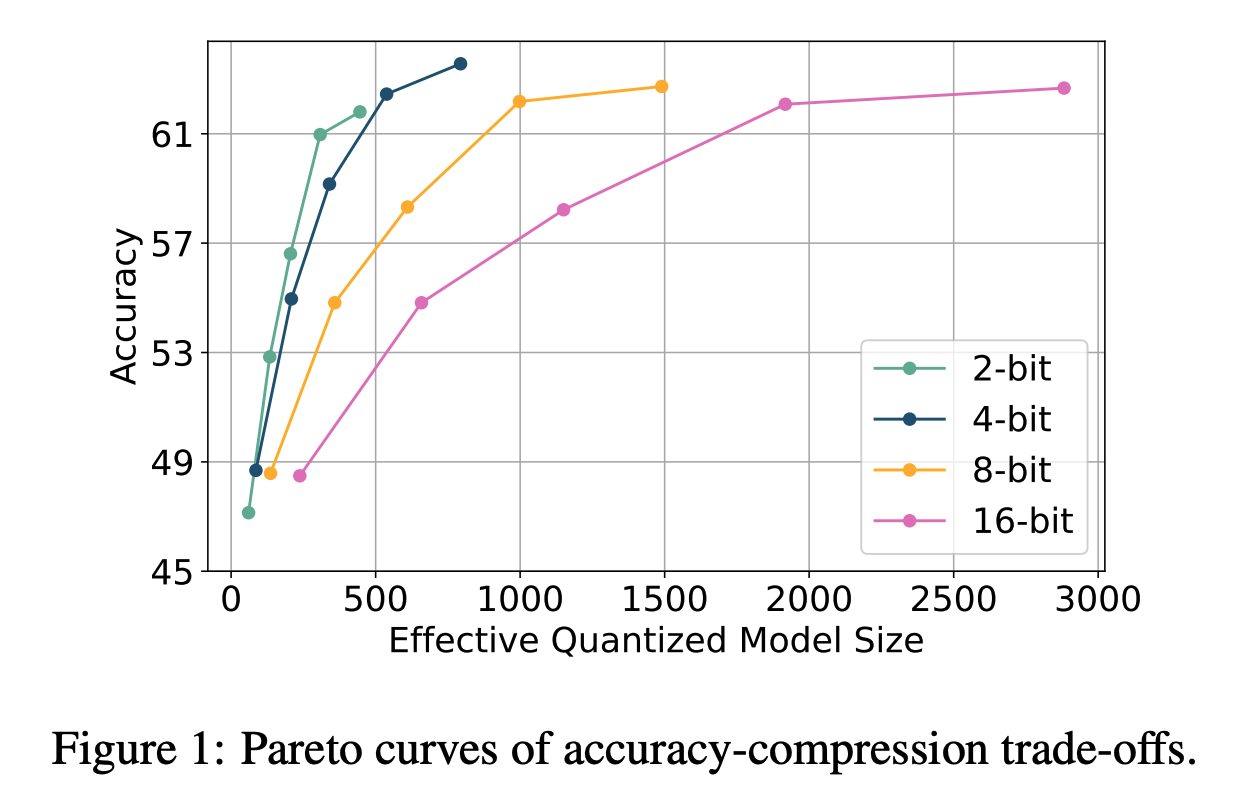
- Identifies a sharp transition between 2-bit and 3-bit quantization, where 3-bit models and above retain pre-trained distributions, while 2-bit models undergo major representation shifts.
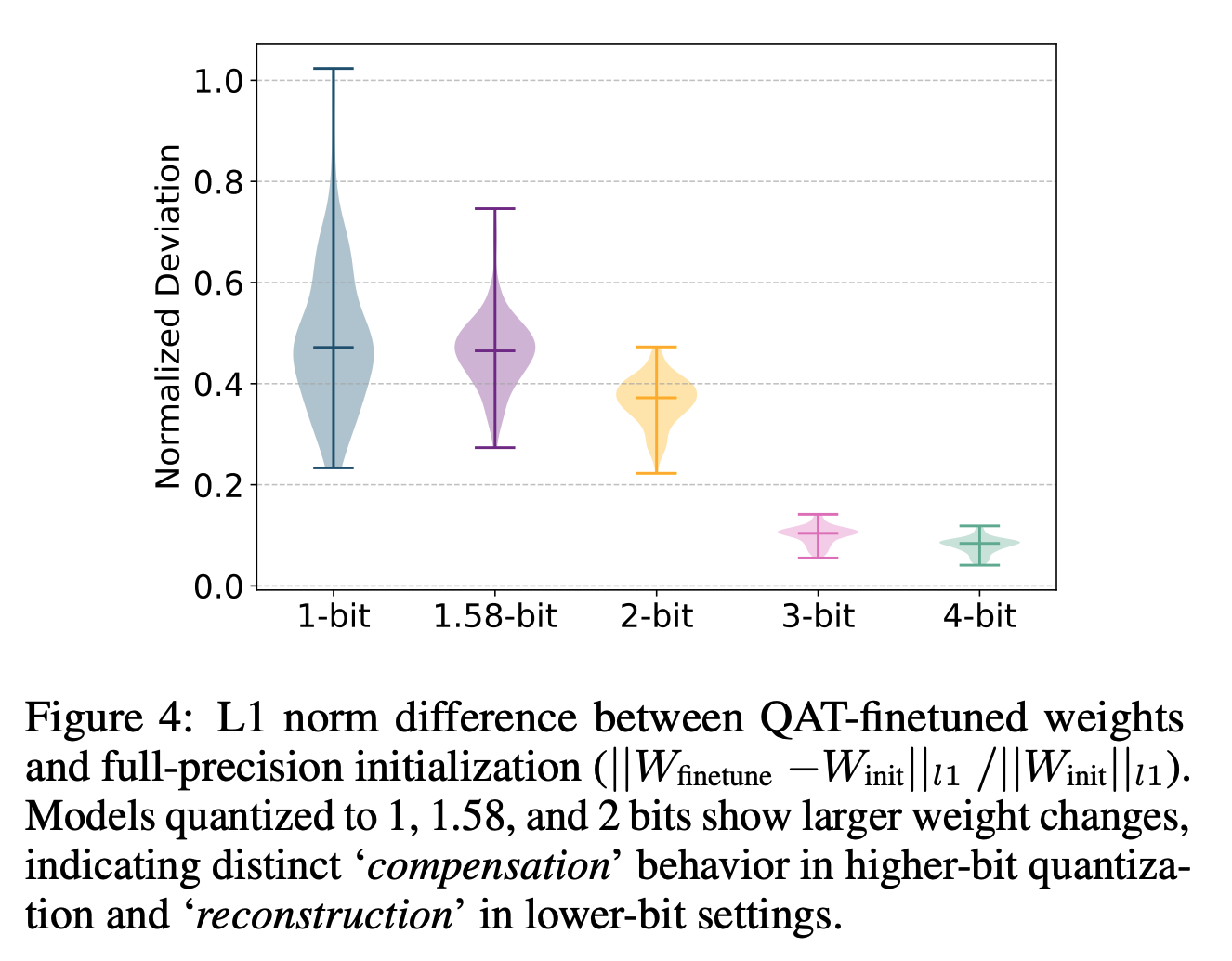
- Quantization-aware training (QAT) consistently surpasses both post-training quantization (PTQ, no fine-tuning) and QAT from scratch.
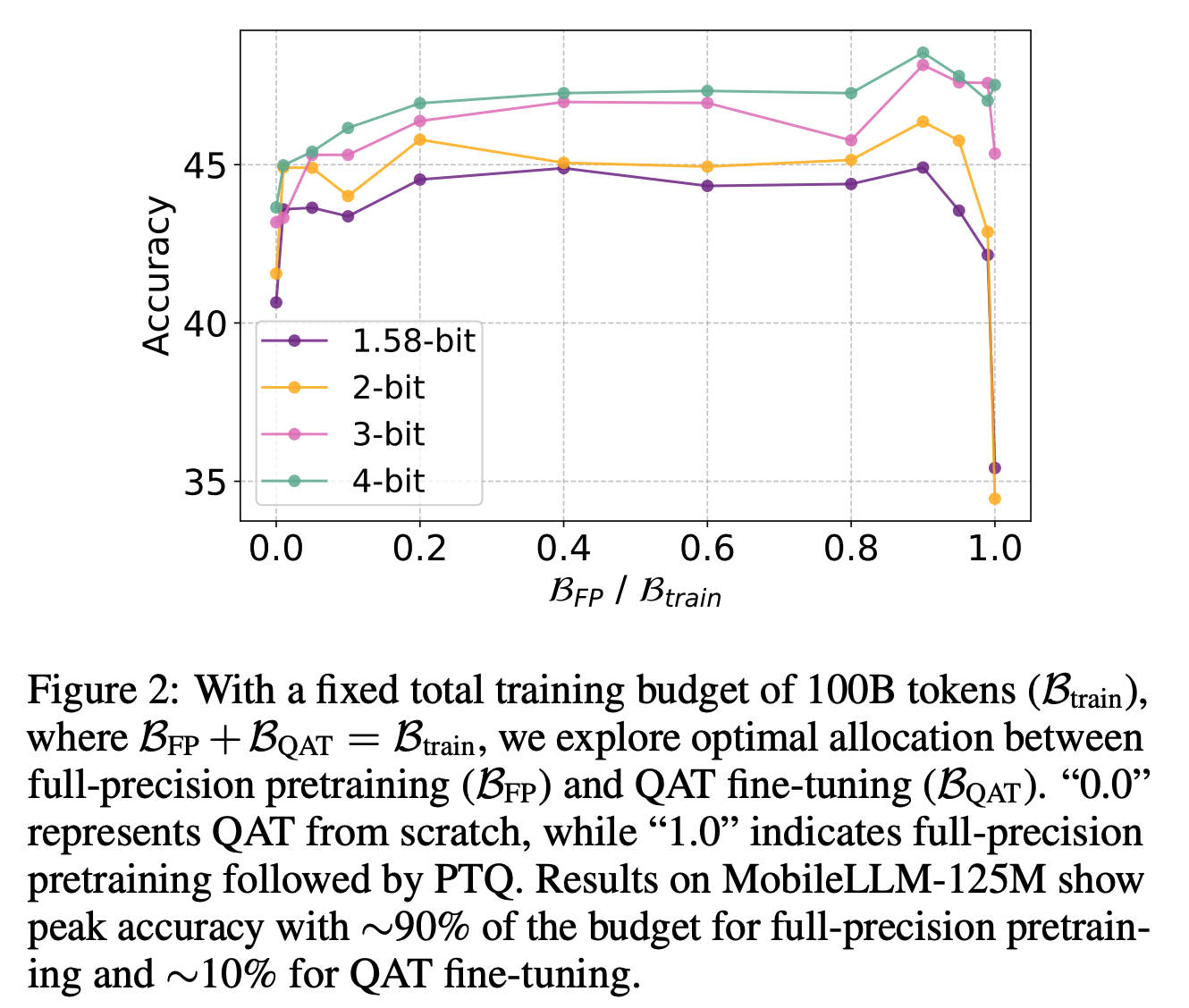
- Propose a refined quantization functions, Stretched Elastic Quant (SEQ), for low-bit settings. \(\mathbf{W}_Q^i = \alpha \left( \left\lfloor \text{Clip} \left( \frac{\mathbf{W}_R^i}{\alpha}, -1, 1 \right) \times \frac{k}{2} - 0.5 \right\rfloor + 0.5 \right) / k \times 2\) \(\mathbf{W}_Q^i = \alpha \mathbf{\hat{W}}_Q^i = \begin{cases} \alpha \cdot \text{Sign}(\mathbf{W}_R^i), & \text{if } N_{bit} = 1 \\ \alpha \left( \left\lfloor \text{Clip} \left( \frac{\mathbf{W}_R^i}{\alpha}, -1, 1 \right) \times \frac{k}{2} - 0.5 \right\rfloor + 0.5 \right) / k \times 2, & \text{if } N_{bit} = 1.58, 2 \\ \alpha \lfloor \text{Clip} \left( \frac{\mathbf{W}_R^i}{\alpha}, n, p \right) \rfloor, & \text{if } N_{bit} = 3, 4 \end{cases}\)
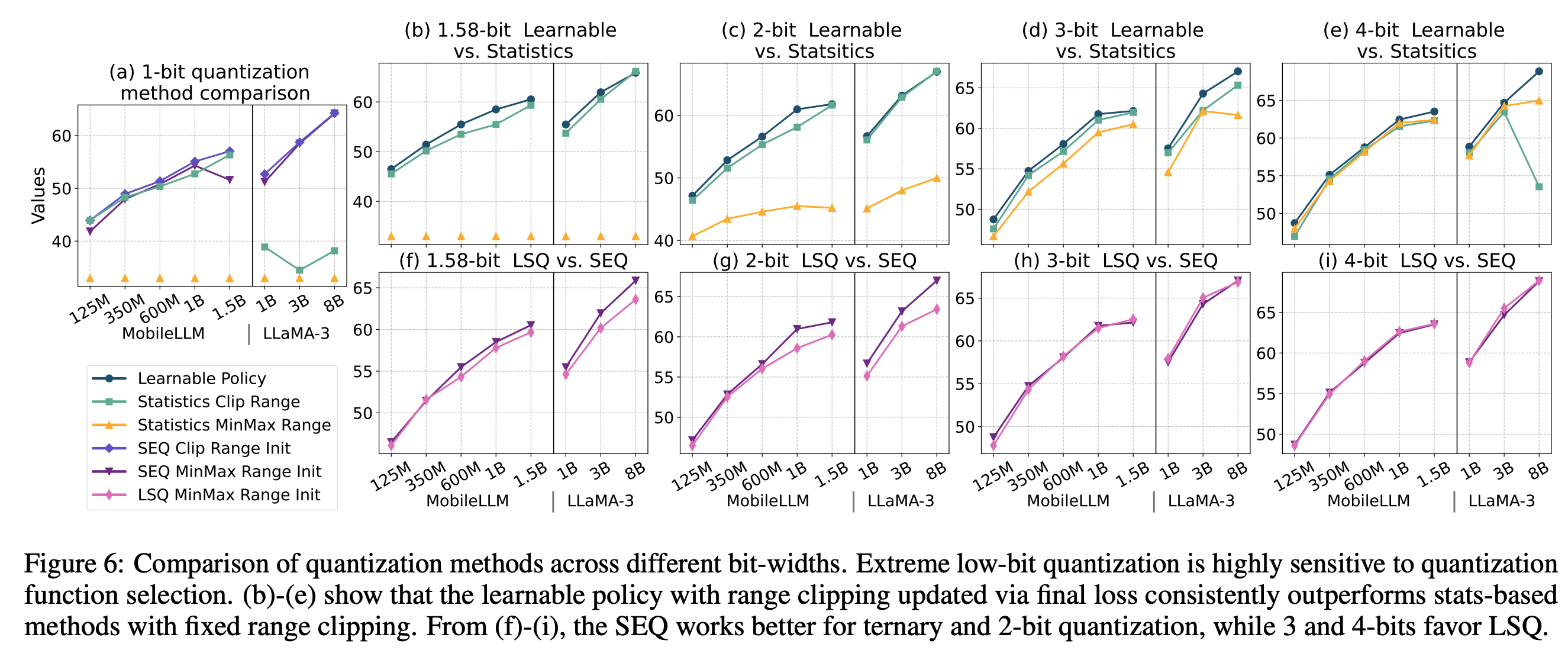
Summary
- Observation 1: Recent studies on scaling laws in the low-precision domain have reached conflicting conclusions.
- Dettmers & Zettlemoyer and Kumar et al argue that 4-bit or 6-bit quantization often resides on the Pareto frontier, balancing accuracy and efficiency.
- In contrast, Ma et al. and Kaushal et al. suggest that bit-widths as low as 1.58 bits per parameter offer significant potential for optimal scaling trade-offs.
- Observation 2: Prior studies overlook the impact of the training scheme, denoted as \(\mathbf{S}_{\text{train}}\), and the bit-specific quantization function \(\mathcal{F}\).
- The problem statement: How to determine the optimal trade-off between bit-width and model size while ensuring accuracy?
- The solution: The authors propose a scaling law \(\mathcal{L}(\mathcal{N}, \mathcal{D}, \mathcal{P}, \mathbf{S}_{\text{train}}, \mathcal{F})\) comprising five dimensions, and systematically optimizes quantization functions and training schemes across different bit-widths.
- Introduces Stretched Elastic Quantization (SEQ), which balances quantization grids for 2-bit and ternary settings.
- Applies learnable quantization ranges, outperforming static min-max methods.
- The proposed framework: The quantized framework evaluates models under 1-bit, 1.58-bit, 2-bit, 3-bit, and 4-bit precision.
Experiments
- Accuracy-compression and Accuracy-speed Trade-off

- 2-bit / 3-bit / 4-bit Comparisons

- 1.58-bit Comparison on Sub-8B Models
- Note: floating-point LLaMA-3 3B model achieves 69.9 accuracy
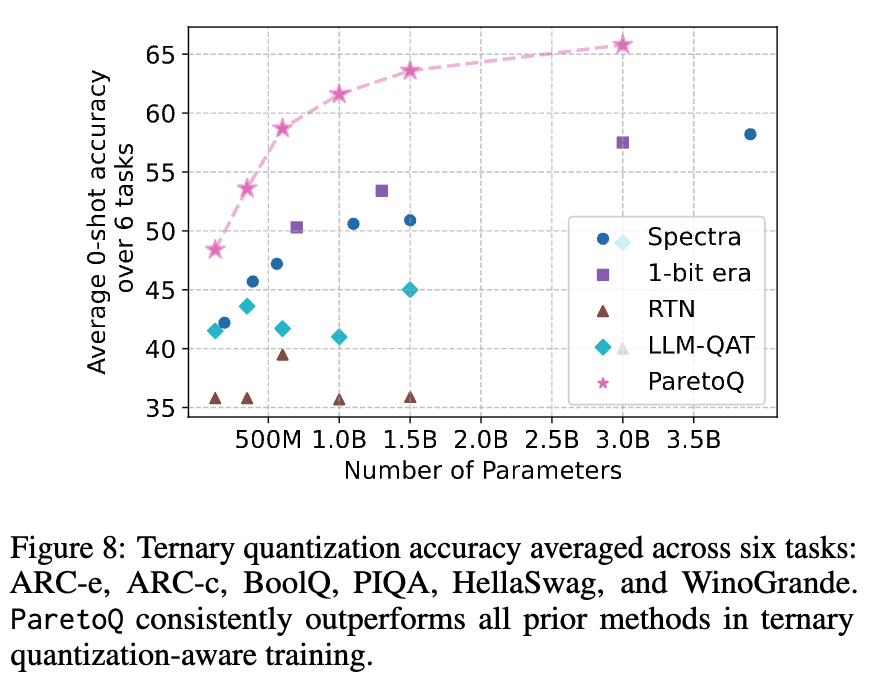
- Main Results
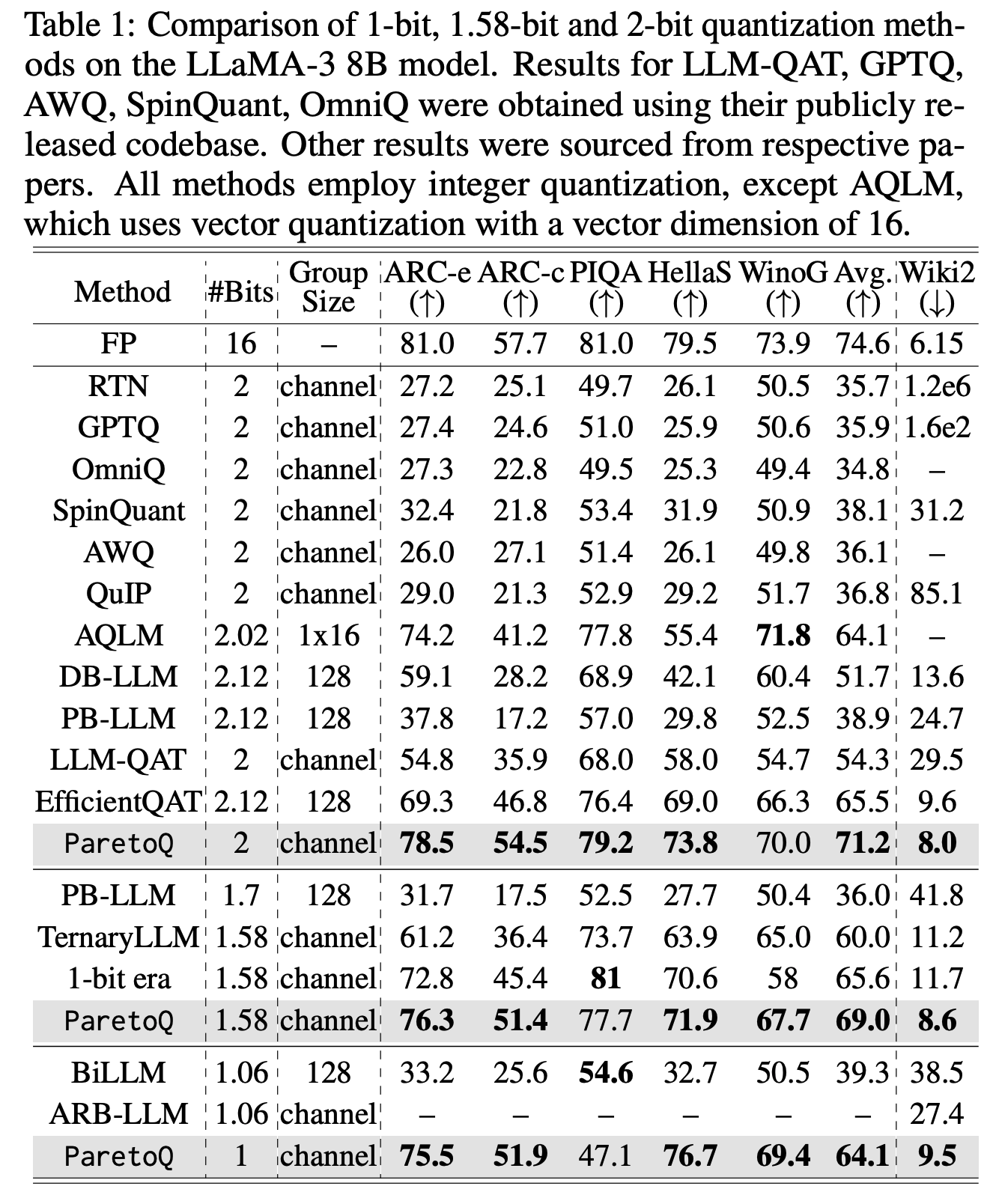
Conclusions
- 2-bit quantization outperforms 4-bit in efficiency-accuracy trade-offs.
- Fine-tuning is crucial for sub-4-bit quantization, especially for binary and ternary models.
- Quantization-aware training (QAT) finetuning consistently surpasses both post-training quantization (PTQ, no fine-tuning) and QAT from scratch
- QAT serves as a compensation mechanism for bit widths above 2-bit and as a reconstruction process for bit widths below 2-bit, where weights adapt to form new representations.
- Extreme low-bit quantization is highly sensitive to quantization function selection, with no single optimal function for all bit widths.